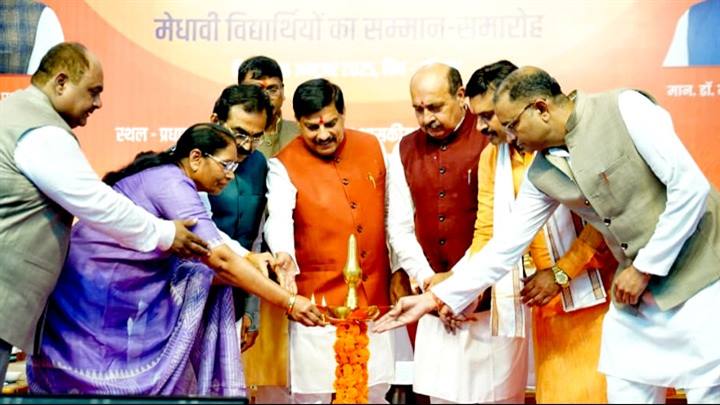Himachal Police Reform Bill: A Step Toward Modernisation Or Shielding Bureaucracy?
The Himachal Pradesh Legislative Assembly recently passed the Himachal Pradesh Police (Amendment) Bill, 2024, marking a pivotal shift in the state’s governance and law enforcement framework. Introduced by Chief Minister Sukhvinder Singh Sukhu, the legislation aspires to enhance administrative efficiency, streamline recruitment processes, and protect public servants from undue harassment.While its objectives reflect a progressive vision, the bill has sparked intense debates, drawing both praise and criticism for its far-reaching implications on accountability, local governance, and administrative flexibility.Enhancing Efficiency or Eroding Local Expertise?The amendment’s reorganization of police constables and head constables from a district cadre to a unified state cadre aims to standardize recruitment and optimize personnel allocation. By centralizing the process under a state-level Police Recruitment Board, the government seeks to eliminate nepotism and address resource disparities between districts.However, concerns about its impact on localized policing have emerged. Critics argue that transferring officers without sufficient knowledge of local socio-cultural dynamics may weaken law enforcement's ability to address district-specific challenges, especially in Himachal Pradesh’s diverse and often remote terrains. Additionally, fears of reduced motivation among local recruits, who often take pride in serving their home districts, could hamper the morale of the force.Political Firestorm and Opposition CriticismThe opposition, led by the BJP, has accused the government of shielding corrupt officials under the guise of reform. They argue that the clause requiring prior sanction creates a legal shield for bureaucrats and politicians, compromising accountability.Additionally, centralizing recruitment is seen as potentially disconnecting officers from the communities they serve, diluting grassroots governance. The BJP’s criticism resonates with concerns about ensuring that governance reforms do not bypass local needs and cultural nuances.Addressing Operational and Resource ChallengesDespite its ambitious goals, the bill lacks provisions to ensure operational autonomy for the police force. Without mechanisms to prevent political interference, law enforcement may remain vulnerable to external pressures, compromising efficiency and independence.Resource constraints also loom large. Policing in hilly terrains demands specialized equipment, infrastructure, and training. Critics highlight that the bill fails to guarantee sufficient funding for these needs, risking the reforms’ practical effectiveness. The absence of provisions for modernizing police housing and mobility in remote regions further compounds the challenge.Shielding Public Servants: Boon or Bane?A standout provision in the bill mandates prior government sanction before arresting public servants for actions taken during official duties. Proponents argue this clause shields honest officials from politically motivated or frivolous litigation, enabling them to perform their duties without fear. However, critics warn that such safeguards may delay accountability, foster impunity, and erode public trust in administrative integrity. Transparency advocates emphasize that such provisions must be accompanied by stringent checks and balances to ensure they do not become tools for shielding malfeasance.Himachal Pradesh: CID Probe Launched After Samosa & Cakes Meant For CM Sukhvinder Singh Sukhu Served To Security StaffAccountability Gaps and Gender RepresentationThe absence of robust external oversight mechanisms raises concerns about ineffective grievance redressal and diminished public trust. Furthermore, the bill inadequately addresses gender diversity and inclusion. Without significant efforts to increase the representation of women and marginalized groups, the police force risks missing the opportunity to become more representative and responsive. Strengthening gender-specific initiatives, such as women’s helplines and women-centric recruitment drives, could complement the reforms.Comparisons with Reforms in Other States: Valuable Lessons for Himachal PradeshMaharashtra: Maharashtra has taken significant strides in reforming its police force through technology-driven recruitment processes. By leveraging digital tools, the state has curbed nepotism and ensured merit-based hiring, enhancing transparency and fairness. However, the transition was not without challenges. The initial phase of implementation faced delays and technical glitches, illustrating the risks associated with over-centralization and the need for meticulous planning and phased rollouts. These experiences highlight that while technology can democratize recruitment, it must be paired with robust infrastructure and periodic evaluations to mitigate bottlenecks and inefficiencies.Kerala: Kerala’s Janamaithri Suraksha Project stands as a pioneering example of community policing. This initiative emphasi

The Himachal Pradesh Legislative Assembly recently passed the Himachal Pradesh Police (Amendment) Bill, 2024, marking a pivotal shift in the state’s governance and law enforcement framework. Introduced by Chief Minister Sukhvinder Singh Sukhu, the legislation aspires to enhance administrative efficiency, streamline recruitment processes, and protect public servants from undue harassment.
While its objectives reflect a progressive vision, the bill has sparked intense debates, drawing both praise and criticism for its far-reaching implications on accountability, local governance, and administrative flexibility.
Enhancing Efficiency or Eroding Local Expertise?
The amendment’s reorganization of police constables and head constables from a district cadre to a unified state cadre aims to standardize recruitment and optimize personnel allocation. By centralizing the process under a state-level Police Recruitment Board, the government seeks to eliminate nepotism and address resource disparities between districts.
However, concerns about its impact on localized policing have emerged. Critics argue that transferring officers without sufficient knowledge of local socio-cultural dynamics may weaken law enforcement's ability to address district-specific challenges, especially in Himachal Pradesh’s diverse and often remote terrains. Additionally, fears of reduced motivation among local recruits, who often take pride in serving their home districts, could hamper the morale of the force.
Political Firestorm and Opposition Criticism
The opposition, led by the BJP, has accused the government of shielding corrupt officials under the guise of reform. They argue that the clause requiring prior sanction creates a legal shield for bureaucrats and politicians, compromising accountability.
Additionally, centralizing recruitment is seen as potentially disconnecting officers from the communities they serve, diluting grassroots governance. The BJP’s criticism resonates with concerns about ensuring that governance reforms do not bypass local needs and cultural nuances.
Addressing Operational and Resource Challenges
Despite its ambitious goals, the bill lacks provisions to ensure operational autonomy for the police force. Without mechanisms to prevent political interference, law enforcement may remain vulnerable to external pressures, compromising efficiency and independence.
Resource constraints also loom large. Policing in hilly terrains demands specialized equipment, infrastructure, and training. Critics highlight that the bill fails to guarantee sufficient funding for these needs, risking the reforms’ practical effectiveness. The absence of provisions for modernizing police housing and mobility in remote regions further compounds the challenge.
Shielding Public Servants: Boon or Bane?
A standout provision in the bill mandates prior government sanction before arresting public servants for actions taken during official duties. Proponents argue this clause shields honest officials from politically motivated or frivolous litigation, enabling them to perform their duties without fear.
However, critics warn that such safeguards may delay accountability, foster impunity, and erode public trust in administrative integrity. Transparency advocates emphasize that such provisions must be accompanied by stringent checks and balances to ensure they do not become tools for shielding malfeasance.
Accountability Gaps and Gender Representation
The absence of robust external oversight mechanisms raises concerns about ineffective grievance redressal and diminished public trust. Furthermore, the bill inadequately addresses gender diversity and inclusion.
Without significant efforts to increase the representation of women and marginalized groups, the police force risks missing the opportunity to become more representative and responsive. Strengthening gender-specific initiatives, such as women’s helplines and women-centric recruitment drives, could complement the reforms.
Comparisons with Reforms in Other States: Valuable Lessons for Himachal Pradesh
Maharashtra: Maharashtra has taken significant strides in reforming its police force through technology-driven recruitment processes. By leveraging digital tools, the state has curbed nepotism and ensured merit-based hiring, enhancing transparency and fairness. However, the transition was not without challenges.
The initial phase of implementation faced delays and technical glitches, illustrating the risks associated with over-centralization and the need for meticulous planning and phased rollouts. These experiences highlight that while technology can democratize recruitment, it must be paired with robust infrastructure and periodic evaluations to mitigate bottlenecks and inefficiencies.
Kerala: Kerala’s Janamaithri Suraksha Project stands as a pioneering example of community policing. This initiative emphasizes building trust and collaboration between the police and local communities. Regular interaction programs, beat-level meetings, and the involvement of community leaders in decision-making processes have strengthened public trust and enhanced the police force’s ability to address localized issues.
The project has significantly reduced crime rates in Kerala, especially in rural and semi-urban areas. For Himachal Pradesh, adopting a similar model could be transformative, particularly in remote terrains where familiarity with local socio-cultural dynamics is critical for effective law enforcement.
Tamil Nadu: Tamil Nadu’s establishment of the Police Accountability Authority underscores the necessity of independent oversight mechanisms. This body acts as a check against misconduct and ensures that protections for public servants do not morph into shields for wrongdoing.
By providing a platform for grievances and ensuring impartial investigations, the authority has bolstered public confidence in the police system. Himachal Pradesh could benefit from instituting a similar body to ensure accountability while safeguarding the rights of honest officials.
Uttar Pradesh: Uttar Pradesh has embraced modernization through initiatives such as digital case management systems, which have improved efficiency and transparency in law enforcement. These systems allow real-time tracking of cases, ensuring accountability and reducing the backlog in judicial processes.
Additionally, the focus on combating cybercrime through specialized training and technology-driven solutions has made law enforcement more adept at tackling modern threats. Himachal Pradesh, with its evolving cyber landscape, can draw from this model to modernize its force and address emerging challenges like cyber fraud and digital crimes effectively.
Risks of Over-Centralization
Bihar’s challenges with centralized recruitment highlight potential pitfalls. Officers unfamiliar with district-specific concerns risk undermining localized policing efforts. In Himachal Pradesh, such risks could be magnified due to the state’s unique geographical and demographic complexities. Addressing these concerns requires a delicate balance between centralization for efficiency and decentralization for local responsiveness.
Recommendations for Success
For the reforms to succeed, the government must adopt a nuanced approach:
Strengthen Accountability: Establish an independent oversight body, akin to Tamil Nadu’s model, to investigate complaints and ensure transparency.
Invest in Resources: Allocate sufficient funding for specialized equipment, training, and infrastructure tailored to Himachal Pradesh’s unique needs.
Promote Community Policing: Draw inspiration from Kerala’s model to foster trust and engagement between law enforcement and local communities.
Embrace Technology: Introduce digital tools for tracking complaints, managing cases, and enhancing transparency.
Enhance Gender Diversity: Prioritize the inclusion of women and marginalized groups to create a more representative police force.
A Bold Vision with Room for Improvement
The Himachal Pradesh Police (Amendment) Bill, 2024, represents a bold attempt to modernize law enforcement in the state. While its focus on efficiency and protection of public servants is commendable, concerns about accountability, resource allocation, and local responsiveness remain significant.
By learning from other states and addressing these gaps, Himachal Pradesh has the opportunity to set a benchmark for modern policing that is both effective and equitable. Balancing administrative convenience with community engagement will be key to ensuring the reforms’ long-term success.
(Writer is senior political analyst and strategic affairs columnist based in Shimla)






















